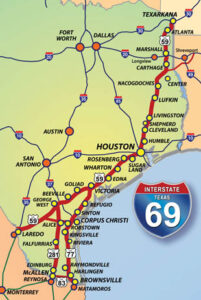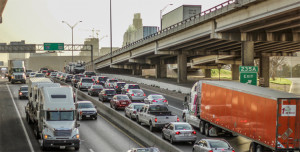EN ROUTE TO LAKE LIVINGSTON STATE PARK, Texas — Donald J. Trump has a few ambitious goals on the table for Americans to ponder. One of them involves what is called “infrastructure.” In other words, the rebuilding, rehabilitating, construction of highways, bridges and the like.
On our way south along U.S. 59, I was struck by signs we saw posted along the highway: “Future I-69 Corridor Project.”
Yep, the plan is to build a new spur in the massive interstate highway network created in the 1950s by another Republican president, Dwight David Eisenhower.
Ike dreamed of the interstate highway system long after he traveled from the West Coast to the East Coast as a young Army officer. It took several weeks to get from coast to coast. That was long before the interstate highway system was built. Eisenhower pushed Congress after being elected president to build the interstate system because he did not want Americans to spend so much time traveling along antiquated roads and highways.
The highway system arguably is Ike’s most profound presidential legacy.
Now there are plans afoot to add to that system through much of East Texas. I would be amazed and impressed beyond all measure if the government is able to pull this off.
U.S. 59 is a nice highway as it is at this moment. We had a wonderful drive south from Northeast Texas through the Piney Woods to Lake Livingston. It is divided by a median along some stretches; even where the medians don’t exist, the highway is well-maintained with smooth pavement.
The plan, if it comes to fruition, is going to result in enormous disruption of people’s lives in communities that sit astride U.S. 59. Cities such as Nacogdoches, Lufkin and Livingston will be torn apart by heavy construction as federal, state and local crews create a limited-access highway through the Piney Woods.
I favor infrastructure improvement. I am not sure that Donald Trump will be able to preside over this massive project. It doesn’t matter to me which president takes credit for its completion.
If such a project is to include the I-69 Interstate Corridor, then the folks along the current highway right-of-way — from Texarkana to the Rio Grande Valley — need to prepare themselves for a serious disruption of their lives.


